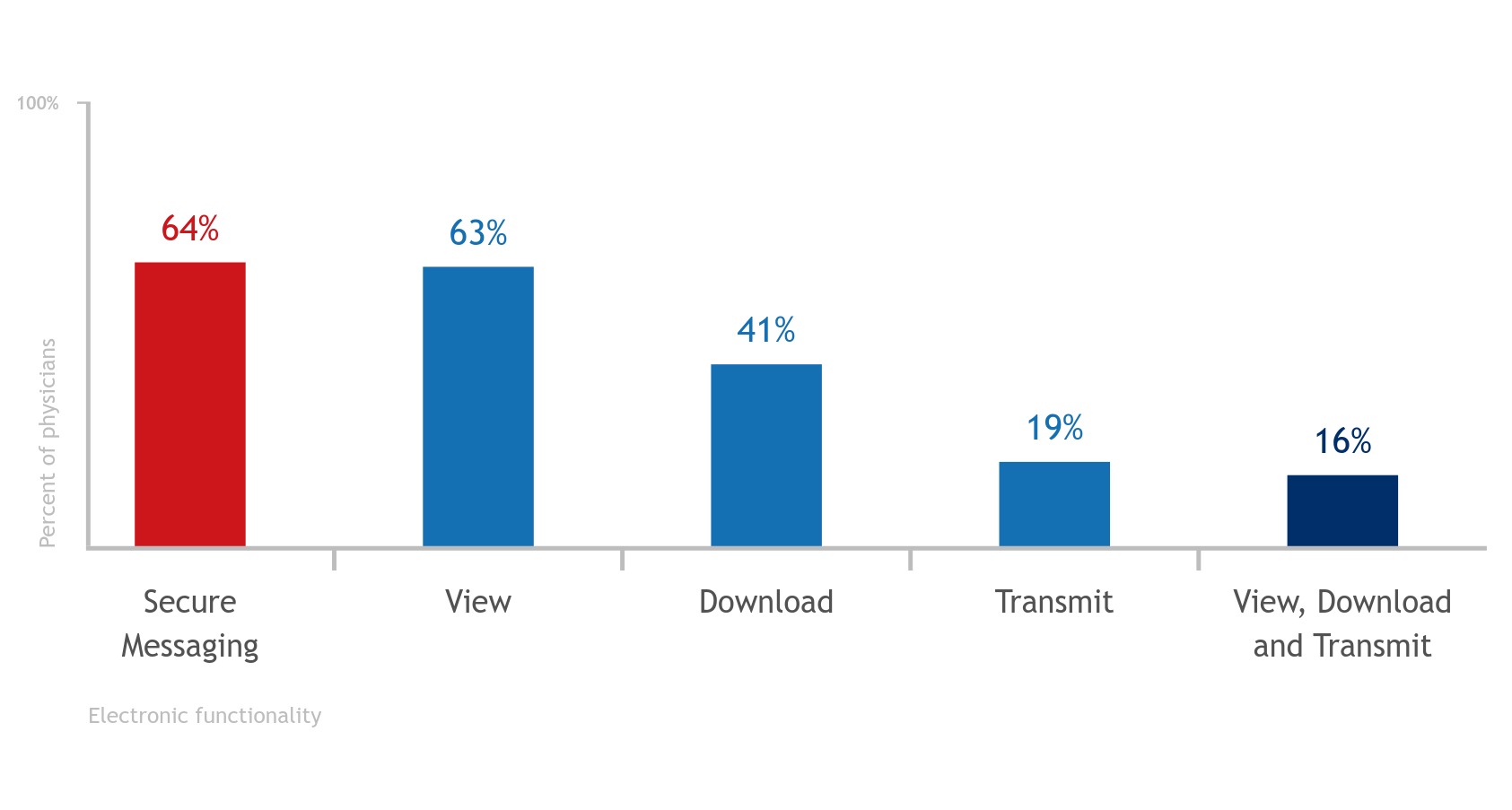Source
2015 National Electronic Health Record Survey (NEHRS).
Citation
Office of the National Coordinator for Health Information Technology. 'Office-based Physician Electronic Patient Engagement Capabilities,' Health IT Quick-Stat #54. https://www.healthit.gov/data/quickstats/office-based-physician-electronic-patient-engagement-capabilities. December 2016.
In 2015, 64% of physicians had an electronic health record (EHR) with the capability to exchange secure messages with patients, an over 50% increase since 2013. Furthermore, 63% of physicians had the capability for their patients to electronically view their medical record, 41% had the capability for patients to download their medical record, and 19% had the capability for patients to electronically send (transmit) their medical record to a third party. Together, 16% of all physicians had the capability to provide all three functionalities - view, download and transmit - to their patients.
In prior years, ONC reported physicians' capability to provide patients any of these three abilities - the then requirement for health care professionals participating in the Medicare or Medicaid EHR Incentive Programs. In October 2015, CMS released a final rule that specifies criteria that eligible professionals, eligible hospitals and CAHs must meet in order to participate in the EHR Incentive Programs in 2015 through 2017 (Modified Stage 2) and in Stage 3 in 2017 and beyond. Beginning in 2015, health care professionals were required to demonstrate all three capabilities: view, download and transmit.
- Secure Messaging: the percentage of all office-based physicians that have an EHR/EMR with the capability to exchange secure messages with patients. This measure was obtained from questions in the NEHRS about EHR functionalities. "22. Indicate whether the reporting location has each of the computerized capabilities listed below: 22t. Exchanging secure messages with patients?"
- View: the percentage of all office-based physicians that have an EHR/EMR with the capability to provide patients the ability to electronically view their online medical record. This measure was obtained from questions in the NERHS about EHR functionalities. "22. Indicate whether the reporting location has each of the computerized capabilities listed below: 22u. Ability for patients to electronically view their online medical record."
- Download: the percentage of all office-based physicians that have an EHR/EMR with the capability to provide patients the ability to download their online medical record. This measure was obtained from questions in the NERHS about EHR functionalities. "22. Indicate whether the reporting location has each of the computerized capabilities listed below: 22v. Ability for patients to download their online medical record."
- Transmit: the percentage of all office-based physicians that have an EHR/EMR with the capability to provide patients the ability to electronically transmit information from their online medical record to a third party. This measure was obtained from questions in the NERHS about EHR functionalities. "22. Indicate whether the reporting location has each of the computerized capabilities listed below: 22w. Ability for patients to electronically send their online medical record to a third party."
- View, Download and Transmit: the percentage of all office-based physicians that have an EHR/EMR with the capability to provide patients the ability to view online, download AND transmit information from their medical record. This measure was obtained from questions in the NERHS about EHR functionalities. "22. Indicate whether the reporting location has each of the computerized capabilities listed below: 22u. Ability for patients to electronically view their online medical record, 22v. Ability for patients to download their online medical record, and 22w. Ability for patients to electronically send their online medical record to a third party."
- Data include non-federal, office-based physicians, and exclude radiologists, anesthesiologists, and pathologists.


